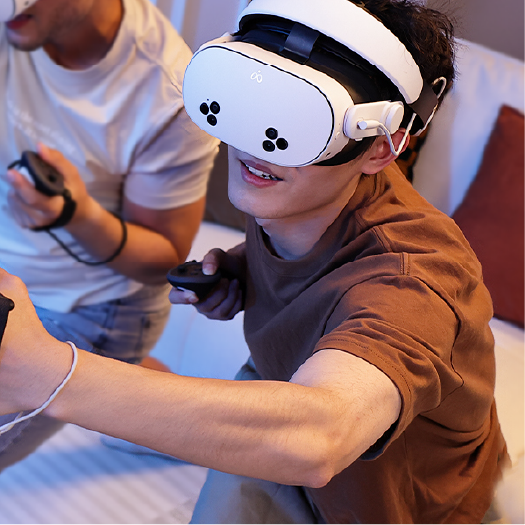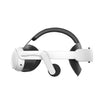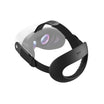Virtual reality has a long history, and its roots slightly differ from how the concept is perceived today. The crucial characteristic that never changes, despite time and evolution, is to make something recognized as real even if it is not.
Defining Virtual Reality
Virtual reality (VR) is a cutting-edge technology that has evolved significantly over the years. At its core, VR is about creating immersive experiences that make users perceive a digital environment as real, even though it exists only in the digital realm. This concept has evolved from early attempts at simulating reality to today's sophisticated VR systems.
Early Attempts at Virtual Reality
The roots of virtual reality can be traced back to early efforts to immerse individuals in simulated environments. One of the earliest precursors to VR was panoramic paintings, which emerged as a concept generator for 360-degree images. These paintings aimed to make viewers feel like they were part of the depicted scene, laying the foundation for VR's immersive experiences.
The 1980s and 1990s: The Birth of Commercial VR
The true birth of commercial VR can be traced back to the 1980s and 1990s. During this period, several pioneering technologies and inventions laid the groundwork for the VR systems we know today. In 1838, Charles Wheatstone's research on stereoscopic images, which demonstrated how the brain processes two-dimensional images from each eye to create a 3D perception, was instrumental in developing VR.
In the 1960s, Morton Heilig patented the "Telesphere Mask," considered one of the earliest VR headsets. This head-mounted display lacked motion tracking but marked an important step in the evolution of VR technology.
Myron Krueger made significant contributions in 1969 with the concept of "artificial reality." Krueger's work focused on creating fully responsive environments where participants became central characters. Projects like Glowflow, Metaplay, and Psychic Space demonstrated the potential of interactive and immersive experiences.

The 2000s: Advancements in VR Technology
Fast-forward to the 21st century, and VR technology continued to advance. Google made a notable contribution to VR in 2007 by enhancing its map service with street-level 360-degree images, providing users with immersive views of real-world locations.
However, the most significant advancements came with the introduction of standalone VR systems. The Oculus Go and Oculus Quest 1, released in recent years, eliminated the need for a computer or smartphone to power the VR experience. This shift made VR more accessible and affordable to the masses, marking a decline in the popularity of mobile VR systems.
2019 – VR is Shifting Rapidly
In recent years, VR has evolved rapidly, with the Oculus Quest 2 leading the charge as the next generation of all-in-one VR. Quest 2 introduced a redesigned form factor, new Touch controllers, and the highest-resolution display in VR to date.
Today, VR is being utilized in various fields, including healthcare, where it offers valuable insights into organ reactions and aids in analyzing certain diseases. Its potential for transforming healthcare and various other industries is becoming increasingly evident.
FAQs
What is the history of virtual reality?
The history of virtual reality dates back to early attempts at simulating reality, such as panoramic paintings and stereoscopic images. The concept evolved over the years, leading to the development of VR headsets and immersive environments.
When was the first VR invented?
The first VR inventions can be traced back to the 1960s, with Morton Heilig's "Telesphere Mask" considered one of the earliest VR headsets. However, the roots of VR can be found in earlier concepts like panoramic paintings.
What are some facts about the first VR?
The first VR experiences lacked many features we associate with modern VR, such as motion tracking and high-resolution displays. They were primarily focused on creating immersive visual and sensory experiences.
When Did VR Come Out?
VR technology emerged in the 1960s but gained commercial prominence in the 1980s and 1990s. The introduction of standalone VR systems like the Oculus Go and Oculus Quest in the 21st century marked a significant milestone in VR's evolution.
Who Invented Virtual Reality?
Virtual reality does not have a single inventor but rather evolved through the contributions of various individuals and technologies. Morton Heilig, Myron Krueger, and Charles Wheatstone contributed to its development.
In 1968, Ivan Sutherland, along with assistance from his students, notably Bob Sproull, pioneered the development of what is widely recognized as the inaugural head-mounted display (HMD) system tailored for immersive simulation applications.
How Was Virtual Reality Invented?
Virtual reality was invented through a series of technological advancements and creative innovations. It began with early attempts to create immersive visual experiences and evolved into the sophisticated VR systems we have today.
When Was Virtual Reality Created?
The concept of virtual reality has a long history, with early attempts dating back to the 19th century. However, the modern era of virtual reality technology began to take shape in the mid-20th century and continued to evolve over subsequent decades.


















Leave a comment
All comments are moderated before being published.
This site is protected by hCaptcha and the hCaptcha Privacy Policy and Terms of Service apply.